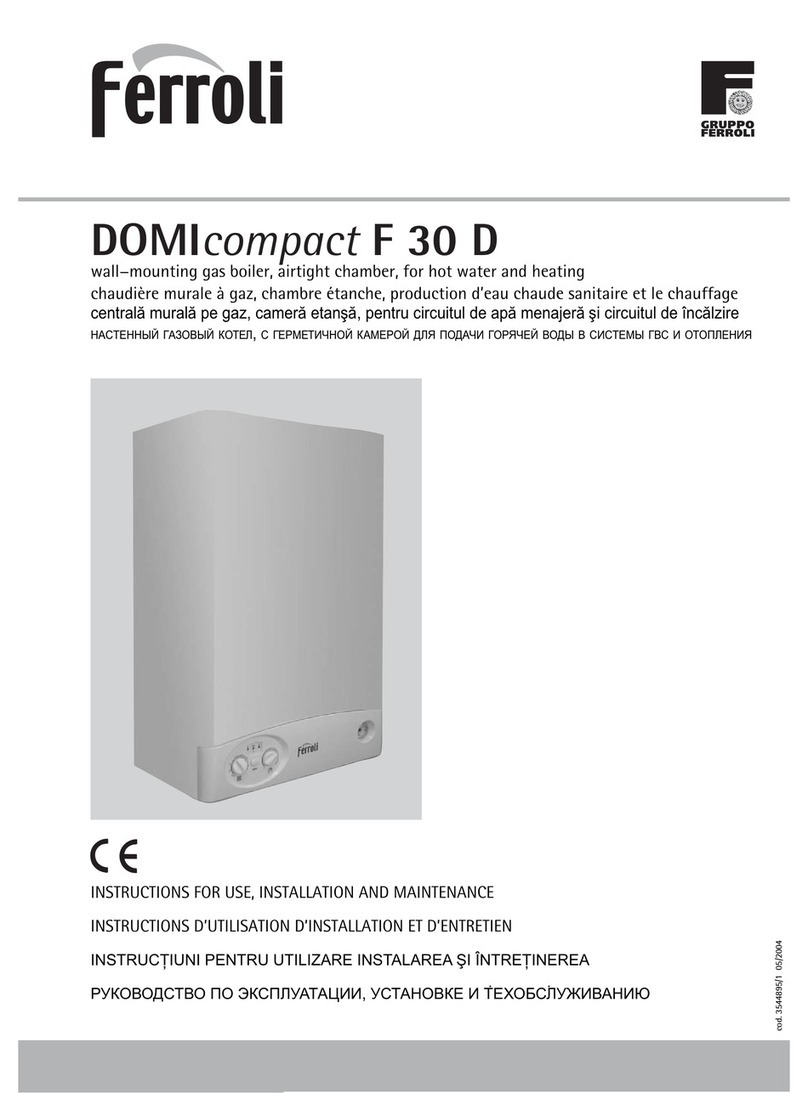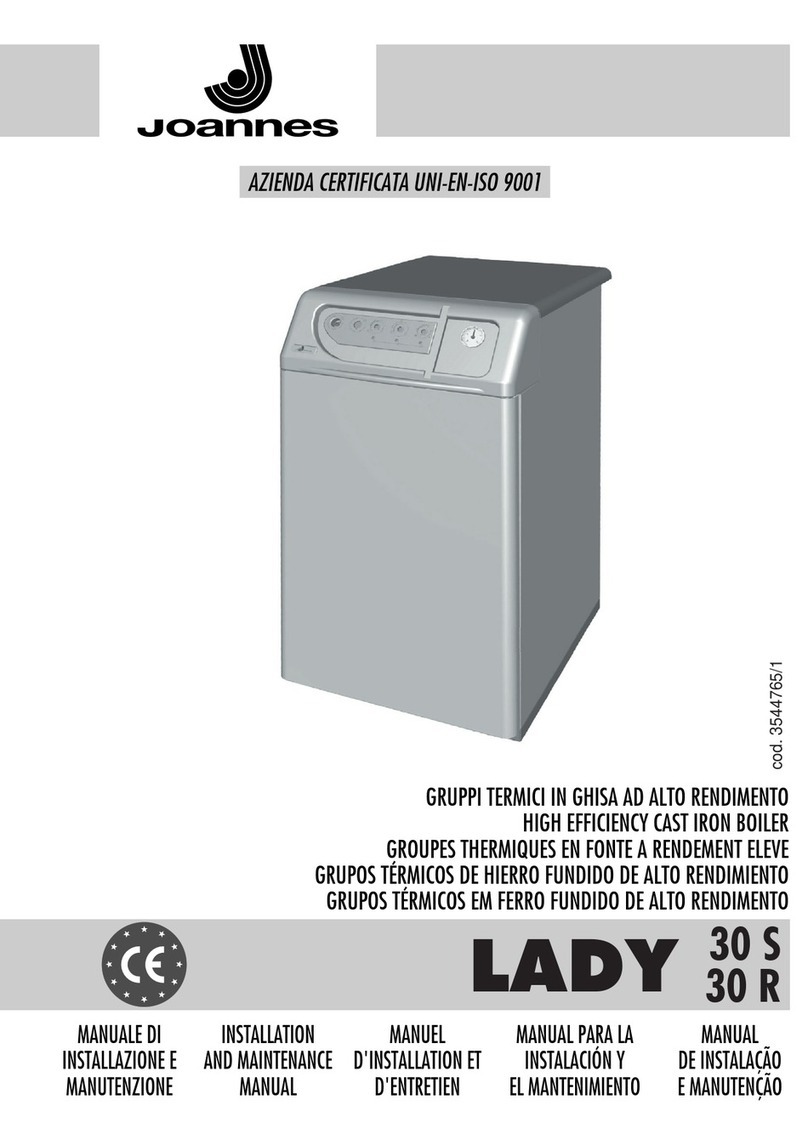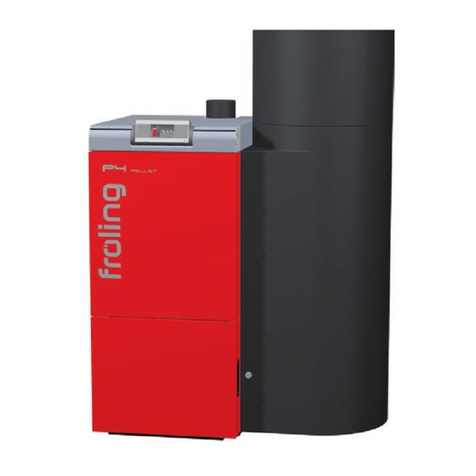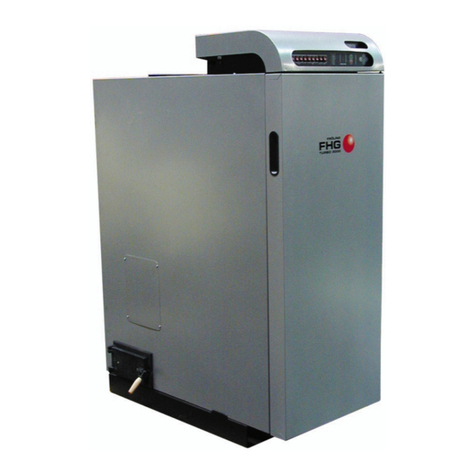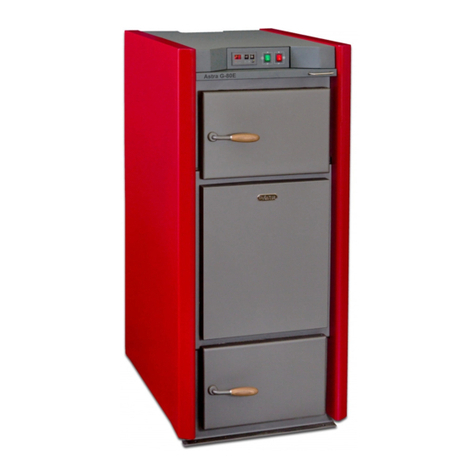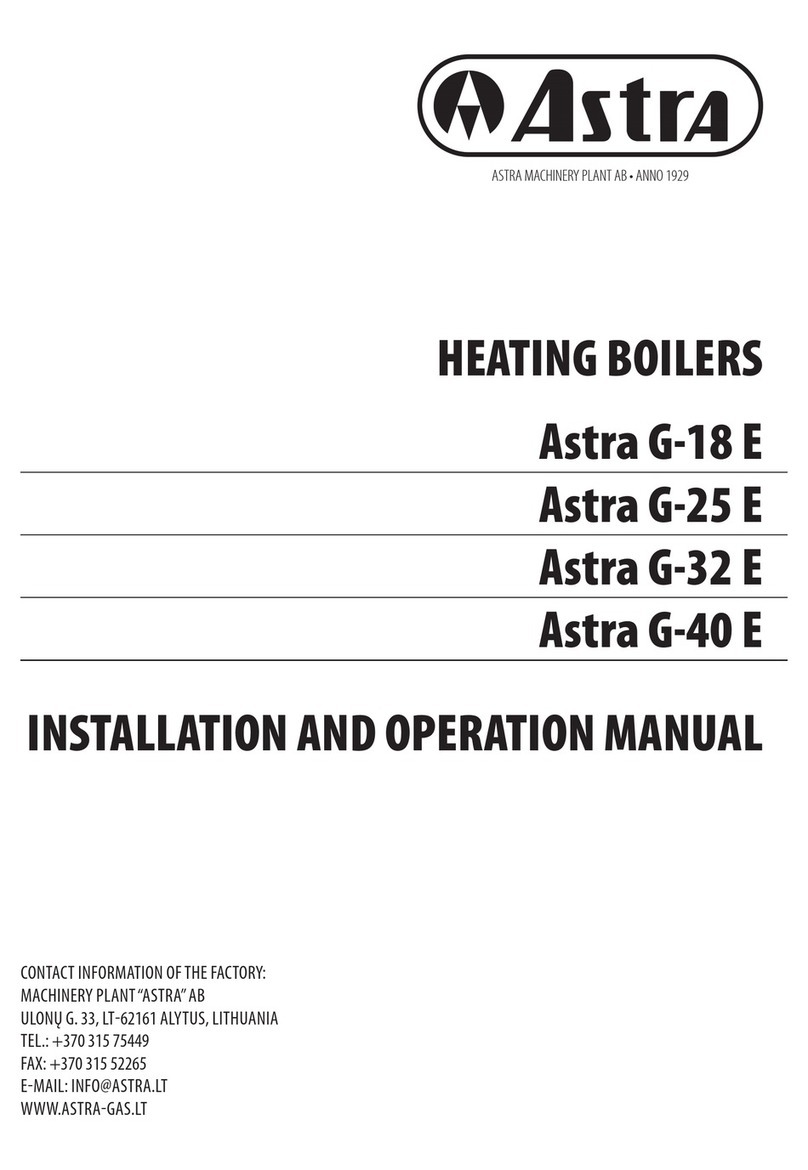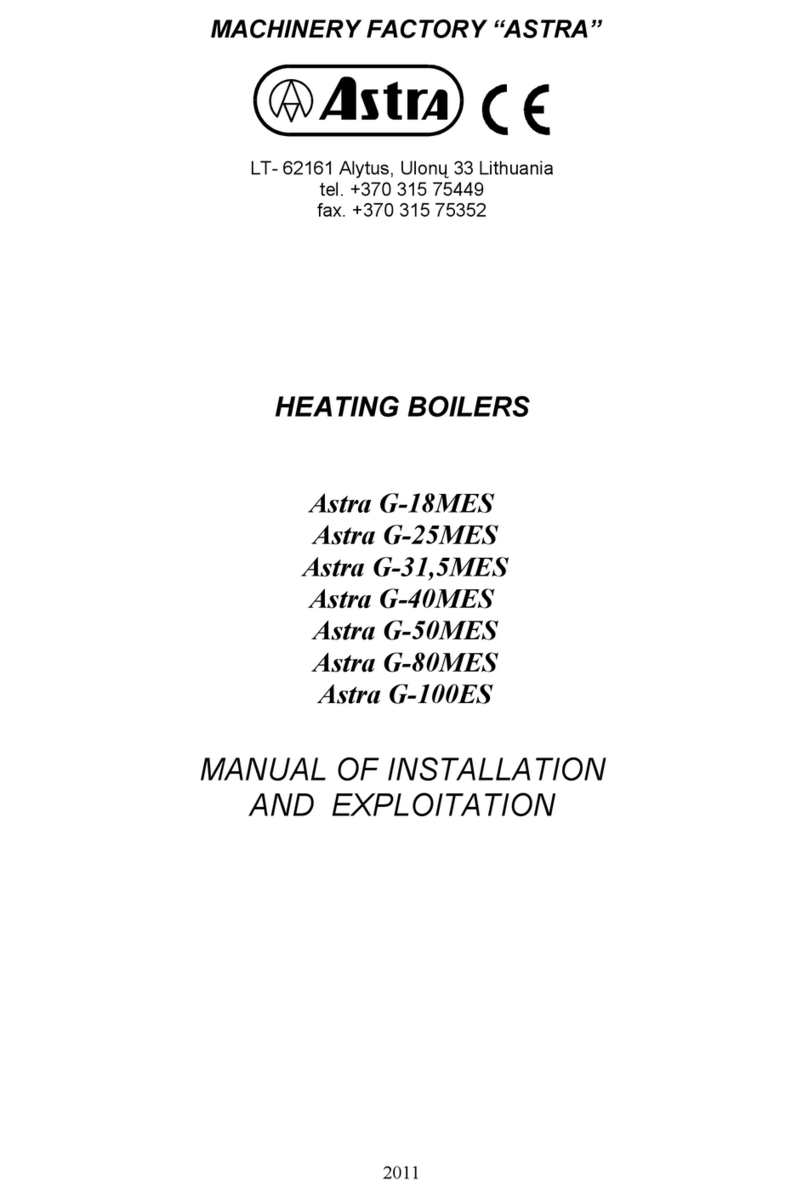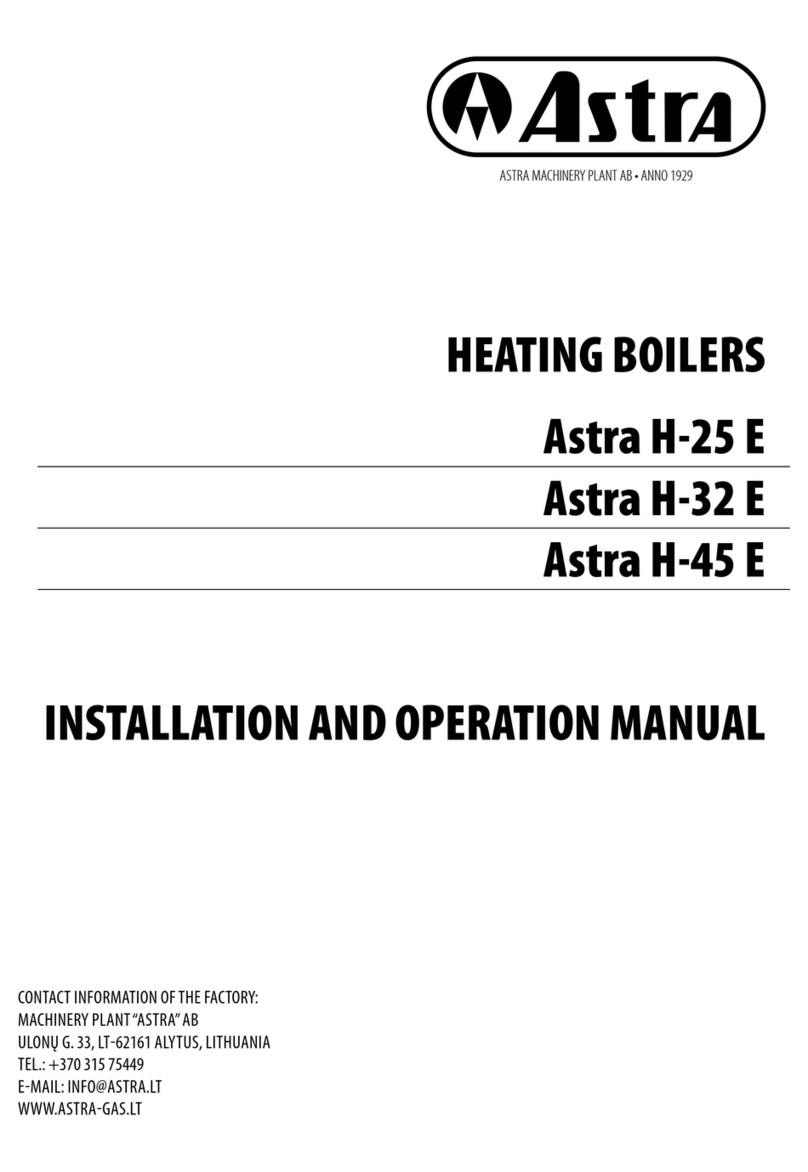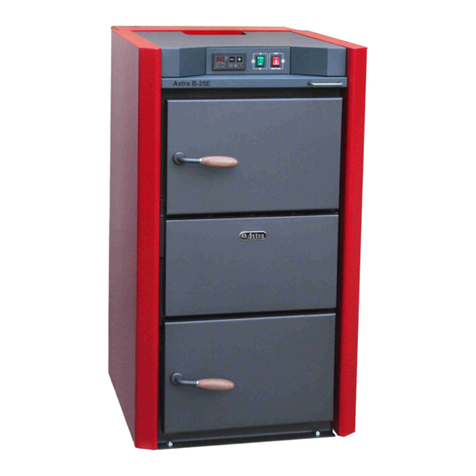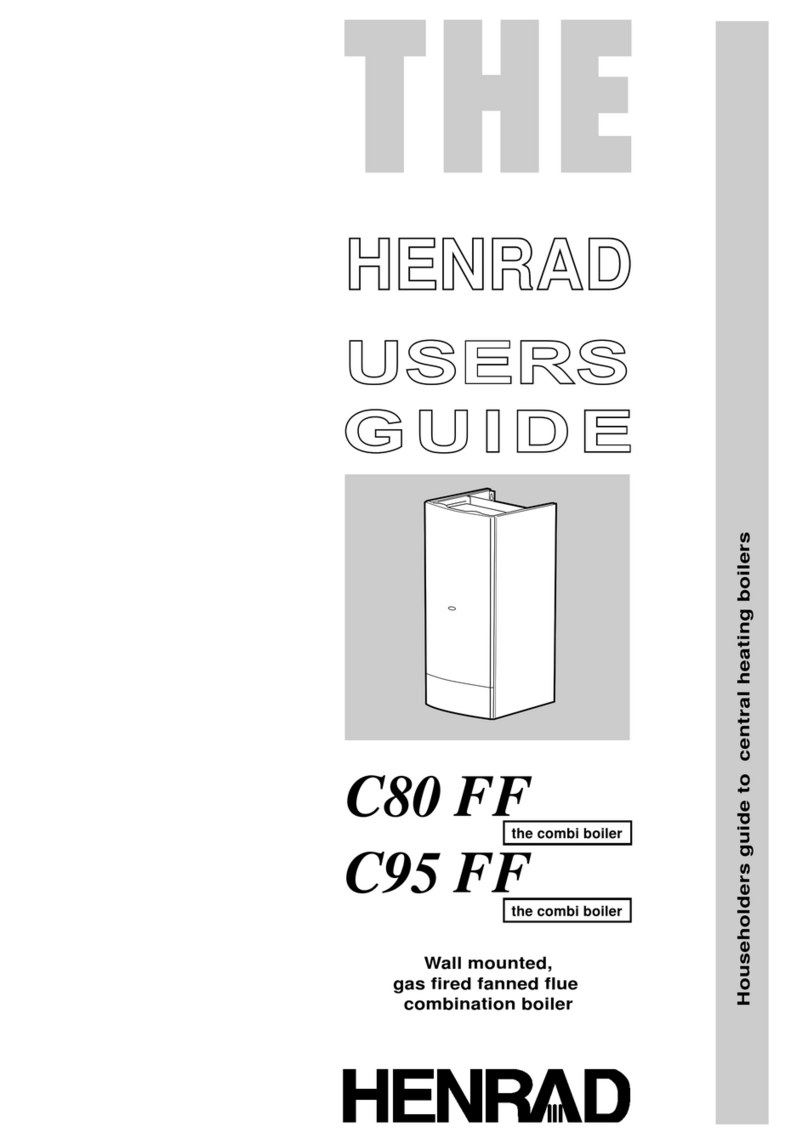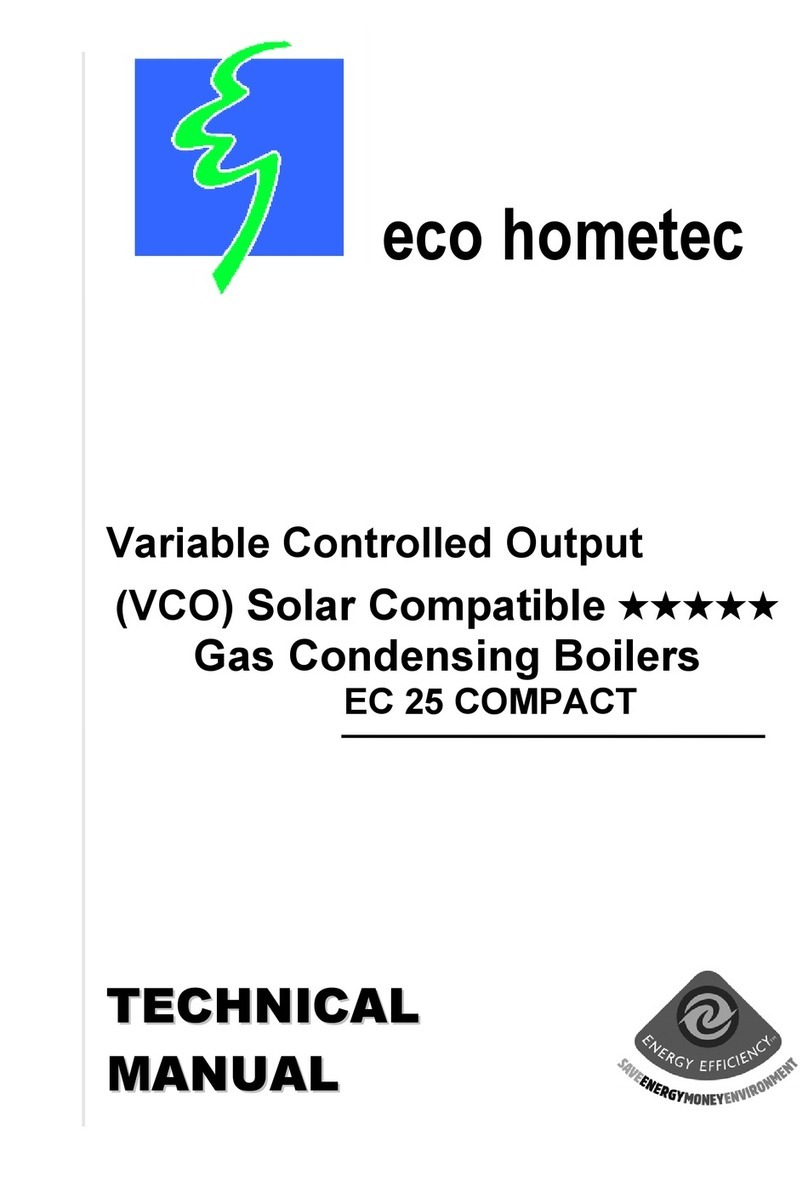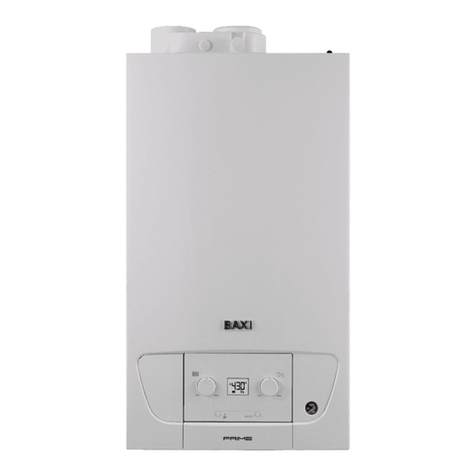
10
HEATING BOILERS: Astra G-50E, Astra G-80E
Theheatconsumptioncircleusestheheataccumulatedinthetank.Thecircleconsistsofaroomthermostatoraprogrammed
control processor, room or/and outside temperature sensors, 3-way servo drive, mixing valve, underoor heating system,
radiators, piping, ttings. The programmed processor controls a 3-way mixing valve, which allows more or less heat (45-
60°C) into the radiators, according to demand. This way of heat consumption allows the heating of the house as long as the
tank stores heat independently from the boiler.
• REQUIREMENTS FOR CONNECTION OF THE BOILER TO THE HEATING SYSTEM
The following requirements should be fullled when installing the boiler:
•Theboilershouldbeinstalled ina closedheatingsystemwithaclosedmembranousexpansionvessel,thevolumeofwhichshould
benolessthan10%ofthetotalvolumeofthesystem.Aclosedheatingsystemisakindofsystemwithnofreeaccesstoatmospheric
air, which actuates corrosion. Due to this, drainage of water from the system without an important reason is undesirable, e. g. in
summer. It is also necessary to ensure watertightness of the system in order to need fewer rells with fresh water containing free
oxygen. The quantity of the additional water let in should not exceed 5% of the system water volume per year;
• The boiler is connected to the heating system through connection pipes 6 – water supplied to the heating system and
11 – water returning from the heating system (Fig. 1);
• Internal threads G 1½” of pipes 6 and 11 ;
• There is a nipple 12 for water lling or draining from the boiler (Fig. 1);
• Internal thread G ½” of the nipple 12;
• A pressure relief valve conforming to norm EN1268-1 is to be installed in the heating system as close to the boiler as
possible at a location easy to reach by hand;
• pressure relief valves and control devices must conform to the following technical characteristics:
Instrument Technical characteristics Type of boiler
Pressure relief valve Connectiondiam. doesnotexceed¾”, set openingpressure3 bar Astra G-50E, Astra G-80E
Thermometer-manometer Range of temperature 0-120°C, pressure 0 – 4.0 bar All boilers
There must be no ball valves installed between the boiler and the pressure relief valve.
• Water from the pressure relief valve should be conducted via an otake pipe. It should be conducted in a way that will
allow the water passing through the pressure relief valve to ow safely, avoiding exposure of people and electrical parts of
the boiler. The diameter of the otake pipe should be no less than the diameter of the otake opening connection nipple of
the safety valve. The total length of the otake pipe should not exceed 2 m. No more than 2 elbow joints at angles of 90° are
to be used when installing this duct. No ball, mixing or other valves are to be installed in the water otake pipe. This otake
pipe is to be installed in a way that will make the ow of the passing water visible. If part of the pipe installed is hidden, e. g.,
in a sewerage pipe, then such a pipe should have a special funnel enabling visual observation of the otake ow of water.
Operation of the pressure relief valve is to be checked at least once a month. The valve is opened
for a short period of time, by turning its head, to reveal a small amount of the otake water. If this is not
done periodically, the parts of the valve can stick together due to high temperature and fail to open, when
required. In case the safety valve fails to open in an emergency situation, serious damage to the boiler and
the heating system can occur as well as hazard to the health and life of people.
In order to guarantee natural water circulation of water in the boiler, the pipework between the boiler
and the mixing valve in the line boiler–mixing valve–boiler is to be of the same diameter and correspond to
